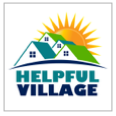Blog archive
November 2025
November 7 Booklist
11/11/2025
October 2025
October 3 Booklist
10/06/2025
September 2025
September 5 Booklist
09/06/2025
August 2025
From Diana Scholl
08/09/2025
August 1 Booklist
08/01/2025
July 2025
June 2025
Hysterically Historical #13
06/07/2025
June 6 Booklist
06/06/2025
May 2025
Hysterically Historical #12
05/24/2025
Hysterically Historical #11
05/23/2025
May 2 Booklist
05/02/2025
April 2025
Hysterically Historical #10
04/23/2025
Hysterically Historical #9
04/18/2025
Hysterically Historical #8
04/17/2025
Hysterically Historical #7
04/13/2025
Hysterically Historical #6
04/12/2025
Hysterically Historical #5
04/09/2025
Hysterically Historical #4
04/06/2025
March 2025
Hysterically Historical #3
03/30/2025
Hysterically Historical #2
03/29/2025
Hysterically Historical #1
03/28/2025
Just trying it out
03/10/2025
What topics might be of interest?
03/10/2025
Hysterically Historical #5
By Pete JacobsenPosted: 04/09/2025
Ten years ago, about the time Eastside Village was forming, a survey was done of a number of existing villages, looking (among other things) at the business models of those Villages. As a result, we can have a sense of the choices our founders were facing.
The most common structure was the Grassroots model. The Village became a stand-alone non-profit that was administered through a combination of paid staff and volunteers. It obtained its own tax-exempt status, and Members were encouraged to participate in governing by volunteering.
The second business model was called the "Parent Sponsored Village". An existing non-profit organization would serve as the fiscal agent for the new Village, also providing "back office" features like legal help, office space, and financial management.
The third model was called the Hub and Spoke model, in which a central organization, created specifically to service Villages, would provide the "parent sponsored" features to a number of Villages, charging a fee for these services.
The last model was called Village with TimeBanks. Members earned "time dollars" by volunteering, and use time dollars for services.
There is one other historical difference with the way Villages have been organized. Some Villages have recruited Board Members from the community following the path of many other non-profits. There would be an effort to attract a lawyer for legal advice, senior people from philanthropic organizations, and others who would be expected to make significant personal financial contributions. Such an organization would allow membership dues to be lower. The alternative is to have the governing body focus on deciding the direction the Village will take, and set membership dues at a rate that sustains the Village (or comes close) without significant external fundraising.
Looking now at Eastside Village, we can see that our founders chose a combination of the Hub and Spoke model, with governance taken more from the Grassroots model. It seems to me they made a great choice!

